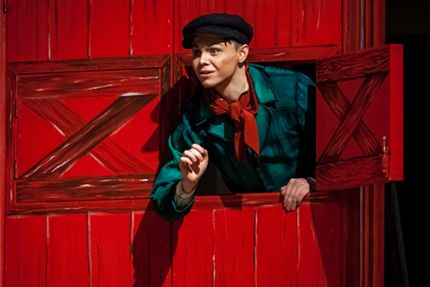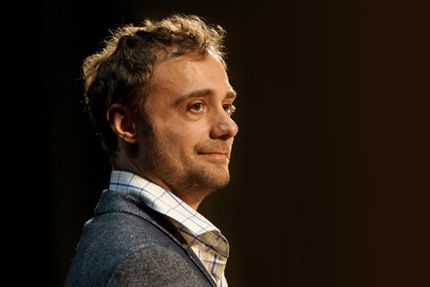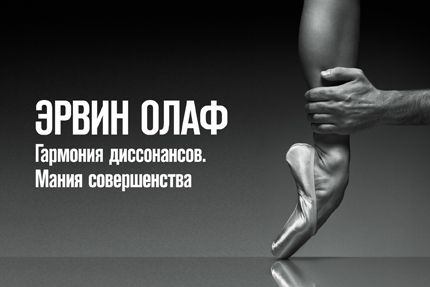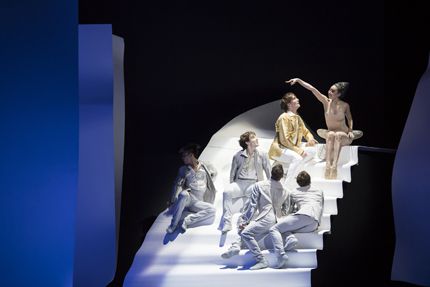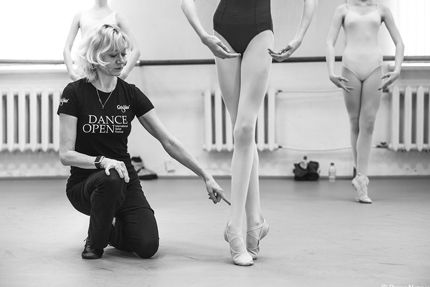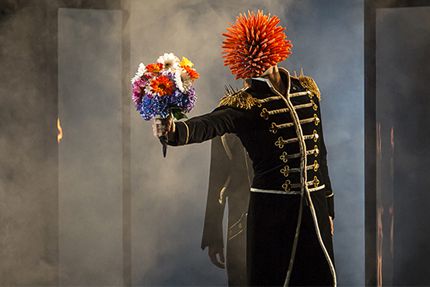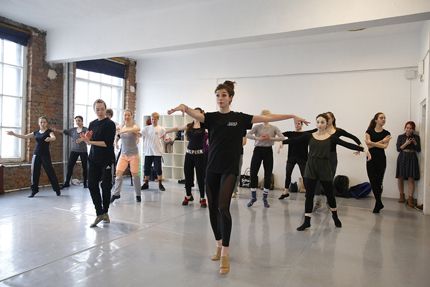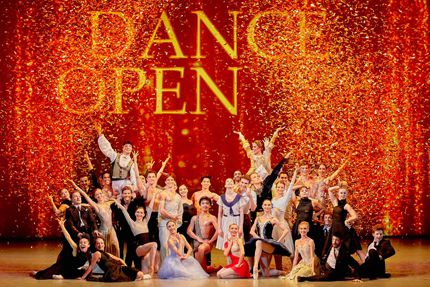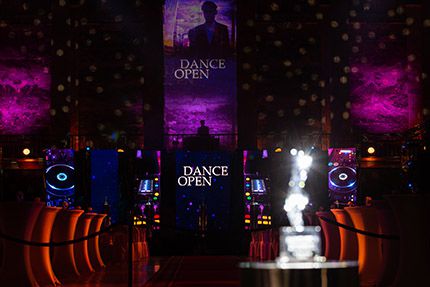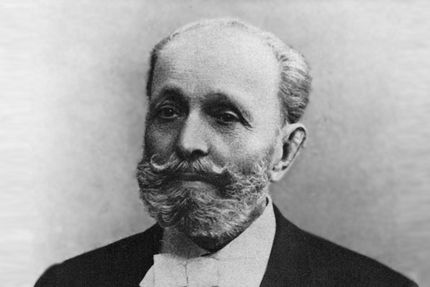XVII Dance Open International Ballet Festival
April 2–17, 2018
Oh, these fairytales
Fairy tales stay alive for as long as people remember them. In order not to be forgotten, they become flexible: beautiful or ugly, funny or sad, wise or deceitful, educational, witty, stupid, kind, or evil.
People stay alive for as long as they remember how to tell fairy tales. To do this, they must be willing to search out new meanings, to tirelessly reread the worn lines etched into eternity.
How do you get a fairy tale a fan club? It’s simple.
First of all, turn it into a ballet. Then it will be admired across generations and continents. Second, set the story in the real world. For example, rethink the adventures of the heroine so that they become relevant to everyone, not just to the lucky owners of glamorous shoes. And finally, the most important thing is to make the fairy tale easily applicable. Sift out all the lies, and turn the hint of a moral lesson into an algorithm for achieving personal happiness.
Okay, Google, but what does it have to do with Dance Open? The thing is that in the XVII season we are delighted to present very different, but equally strong and impressive stories with all the factors of success mentioned above.
We offered a fascinating course of fairytale therapy from the most talented storytellers of the ballet world, a marathon through the looking glass, where the bitterness of saying goodbye is just an illusion. We really hope that you woke up from this gentle April madness, the recollection of it, as with any fairytale, had made you a little (or a great deal) happier.
What did we have? «Cinderella» performed by the Ballet of Monte Carlo, staged by the brilliant storyteller Jean-Christophe Maillot (by the way, he is the only one official court choreographer today). There is so much written about it, but we will tell the main thing: there are no carriages, shoes, pumpkins and magic sticks. Even the prince here is a secondary character. This fairytale is about… the mother. It does not matter where she is now: on earth or in heaven. The most beautiful and kind Fairy is always there and leads Cinderella through life. This fairytale is about a family worth more than anything in the world; about the love that connects time and blurs the boundaries between worlds; and about the fact that there is no death. Well, even if there is, people continue to live as long as their loved ones remember them.
Finding «your people» becomes more and more difficult in the modern world; therefore, here is a piece of advice from the Fairy and the wizard Maillot: if you do not want to miss your happiness, you should always stay true to yourself, and then you will not need crystal shoes or dull social events. Your destiny will recognize you by the golden reflection of your heart, just as the prince recognized the absolutely barefoot «Cinderella» whose beautiful feet were «stained» with golden dust…
Another fairy tale about the search for a soulmate was told by the ballet company of Geneva’s Grand Théâtre. «The Nutcracker» choreographed by Jeroen Verbruggen resembles either an animated blockbuster like Tim Burton’s movie, or an unpredictable adventure game in the mirror-world, where a teenage girl Marie is searching and loosing herself in hundreds of reflections and dozens of doors. Each step is like a butterfly effect: scream, but you never know who will hear it and where. The nutshell of fears and doubts will crack only when Marie meets him — the Nutcracker, a man without skin, the literal meaning of the expression «naked soul» and recognize herself in this sincere, vulnerable and wise person.
A search for new meanings in the countless reflections of the choreographic treasury has already become a brand feature of Dutch National — a frequent and sought-after guest of Dance Open. You cannot get tired of their virtuosity and surprisingly fresh interpretations. Worn-out yellowed pages of «Tristan and Isolde» come alive thanks to David Dawson, who rewrote them with his own language. It is amazing how imaginative, intriguing and meaningful can the modern choreographic text be. In fact, this alliance of the surrealistic form and the fairytale content is intensely verbal. Dawson is echoed by Wheeldon, Ratmansky, Pastor and maestro van Manen, powerful wizards who force the human body to express the inexpressible and create a metaphor from the very ordinary.
Well, if both the language and the plot are equally «insane», the fairy tale goes to the depths of subconsciousness: there, under the heavy dusty feather beds, under the weight of all the empty and unnecessary things lies the very pea-pearl that prevents the princess from sleeping. Perhaps, after watching the fairy tales from the Slovene National Theatre Maribor, someone could finally discover his own pearl. Alexander Ekman, who always stays true to his ironic and sarcastic muse, through choreography and treadmill, showed the «real» time management on the edge of absurdity. Johan Inger put his dancers in the vertical space of a long wooden wall: «Walking Mad» takes all the participants of this strange promenade out of the zone where the laws of gravity apply. It also takes the audience out of their comfort zone, forcing them to look beyond their fears, stereotypes and habits. Finally, for those who still cannot see the pearl under their mattresses, Edward Clug offers «Hill Harper’s Dream», a surreal fairy tale with all the attributes of insight: bright images, piercing emotions and deep revelations. Girls in pointe shoes standing on skis surrounded by a snowy fog: who are they? Erinyes? Angels? Or Bayaderes from the ballet of the great Petipa? What did you see? Everyone has their own dreams.
In a fairy tale, just like in life, everything is interconnected: the past inspires the future, and the future revives and reinterprets the past, continuing its youth in other eras.
The numerous reconstructions and restorations of the «La fille mal gardée» — the oldest ballet masterpiece — is a bright illustration of this continuity. The classic vaudeville comedy about the reunion of lovers, recreated by a href=http://www.danceopen.com/en/xvii-season/choreographers-2018/2159-marius-petipa-2>Marius Petipa at the end of XIX century, and modernized by Sergei Vikharev nowadays, once again proves that every story intimates an idea of immortality. And this is not about magic; this is about creativity and passion.
For the record, this year the ballet world celebrates the 200th anniversary of Marius Petipa. His immortal story, flying ahead of the memory, is another vivid confirmation of what was said — it is all about passion!
It connects different worlds, languages, and epochs; invents the «time machine» and makes richer those ones who still love fairy tales.
Do you like fairy tales as much as we like them?

